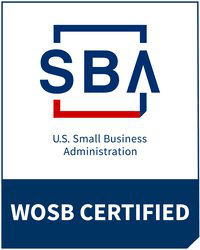Immunohistochemistry Frozen
IHC-F
Immunohistochemistry (IHC) is an assay typically used to detect antigens, via labelled antibodies, in biological samples. It can be used to analyse the distribution, abundance and localisation of proteins, glycans and other small or non-biological molecules; such results offer insight into cellular structure and mechanisms. There are two detection methods for immunohistochemistry: colorimetric and fluorescent. Fluorescent detection uses fluoresence-labelled antibodies, and the method is more commonly referred to as Immunofluorescence (IF). Colorimetric detection uses enzyme-conjugated antibodies that produce a coloured precipitate.
See below for a general protocol for the immunohistochemistry staining method SABC (Strept Avidin Biotin-peroxidase Complex), for frozen samples. Streptavidin labels the target protein through the combination of its carboxyl and the amidogen of the protein. It has high sensitivity and low non-specific binding to tissues and cells, resulting in very low background.
A. Preparation
- PBS
- 4% Paraformaldehyde
- Ethanol (80%, 90%, 95% and 100%)
- OCT embedding medium
- Liquid nitrogen
- 30% H2O2
- Methanol
- Citrate buffer (pH 6.0)
- Compound digest solution
Sample Preparation
- Wash fresh tissue with PBS to remove blood. Remove connective tissue using tweezers, and carve tissue into small pieces.
- Prepare elongated tin foil. Add OCT embedding medium (to cover bottom part). Fix tissue and pour enough OCT embedding medium into mold. Using tweezers, place the bottom part of tin foil into liquid nitrogen for 1-2 min (until OCT embedding medium colour changes to white). Record tissue details with oil pen.
- Pre-cool slicer box to -22 ℃. Pre-cool detector to -24 ℃. Ensure completeness and smoothness of blade.
- Open tin foil and put the tissue into pallet; fix on detector. Adjust and slice tissue quickly and carefully to 5 um thickness. Use cover slip to take sliced tissue. Allow to dry.
- Fix frozen section by immersion into 4% Paraformaldehyde for 10 min. Wash with PBS several times. Allow to dry. Store at -20 ℃ for two months.
Inactivation
- Prepare a 1:50 solution of H2O2 in methanol (mix one part H2O2 with 49 parts methanol).
- Immerse frozen section and cell slice into solution at room temperature for 10 min.
- Wash with distilled water for 1 min, 3 times.
Antigen Retrieval (optional)
- Enzyme digestion: use filter paper to dry extra distilled water upon frozen sections or cell slice. Add compound digest solution and incubate at room temperature for 3-5 min. Wash with PBS for 5 min, 3 times. With regards to cell slice, it is recommended to add 0.1% Triton and incubate for 10 min before enzyme digestion. Then wash with PBS for 10 min, 3 times.
B. Protocol
- PBS
- 1% Triton X-100
- 5% BSA blocking solution/goat serum
- DAPI
- Antifade mounting media
- Primary Antibody
- Conjugated-Secondary Antibody
- SABC reagents
- Add 5% BSA blocking solution or normal goat serum and incubate at 37 ℃ for 30 mins with shaking.
- Dilute primary antibody in blocking buffer. Incubate at 37oC
- Wash with PBS for 20 min, 2 times. Add labelled (enzyme- or fluorophore conjugated) secondary antibody and incubate at room temperature in the dark for 1-2 hrs. Note: When using any primary or fluorochrome-conjugated secondary antibody for the first time, titrate the antibody to determine which dilution allows for the strongest specific signal with the least background for your sample.
- Wash with PBS for 20 mins, 2 times. Add SABC reagents and incubate at 37 ℃ for 30 mins. Wash with PBS for 20 mins, 3 times. Note: Prepare solution by mixing 1 ml distilled water with one drop of Reagent A, B, C.
- Incubate at room temperature as per instructions.
Counter-staining (if required)
- In preparation for ‘counterstaining; with IB4/DAPI or GFAP/DAPI, incubate the sections in PBS with Ca2+, Mg2+, and Mn2+ and 0.1% Triton X-100 for 15 mins. Rinse the slides through a quick change of PBS.
- Incubate slides in 1:10,000 DAPI for 30 min. Wash slides in PBS for 2 mins, 3 times.
- Prepare antifade mounting media according to directions. Allow the slides to dry approximately ¾ to completion. Place the coverslip taking care to remove any bubbles formed beneath the coverslips.



